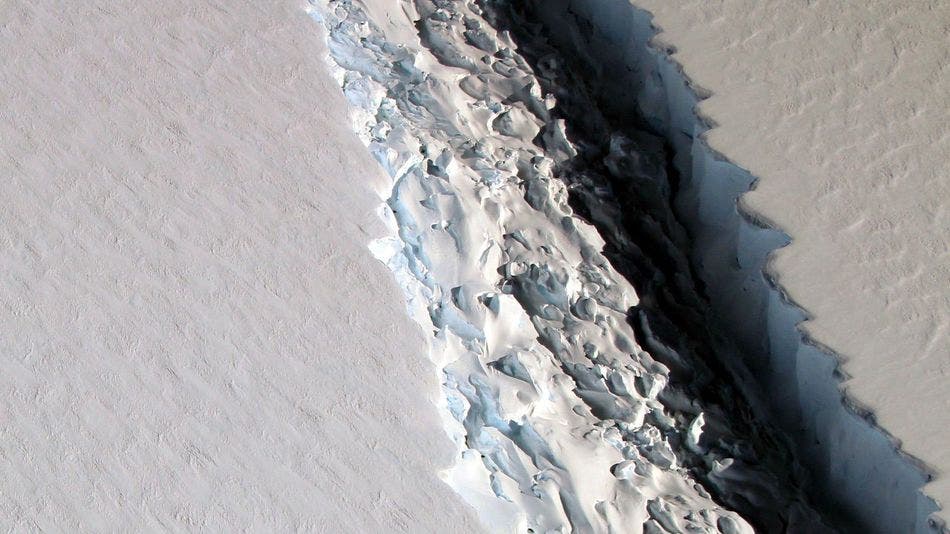It looks like we’re moving closer to a dramatic break-up as the massive Larsen C Ice Shelf in Antarctica is about to produce a massive iceberg the size of Delaware.
In 2004, a study found that the remaining Larsen C region, which is the furthest south, appeared to be relatively stable. There were no signs of breaking. But their study ended with an ominous warning: continued warming will likely lead to its breakup within a decade. Well, their study wasn’t too far off and it looks like their warning was spot on. Global warming makes it so that the breaking of the Larsen C ice shelf is imminent, as the new photo reveals.
The fracture appears to be 70 miles long, more than 300 feet wide and about a third of a mile deep, NASA reports.
The rift is likely to lead to an iceberg breaking off, which will remove about 10% of the ice shelf’s area pic.twitter.com/uu1KKWG0WP
— Project MIDAS (@MIDASOnIce) August 18, 2016
“The crack completely cuts through the Ice Shelf but it does not go all the way across it – once it does, it will produce an iceberg roughly the size of the state of Delaware,” NASA said in a press release.
View is of a rift in the Antarctic Peninsula’s Larsen C ice shelf from our airborne survey of polar ice: https://t.co/VgjxopHHLI @NASA_ICE pic.twitter.com/gt5mpHqbxn
— NASA (@NASA) December 3, 2016
It’s not clear when this collapse will take place, but it’s likely in the next few years. When the calving does happen, it will be the biggest in Antarctica since 2000, and the third biggest such event ever recorded. When this happens, sea levels will rise accordingly. Contrary to what most people believe, the breaking of icebergs doesn’t directly raise sea levels that much because they’re already in the water – much like an ice cube inside a glass. Instead, it’s the fact that the ice acts as a door-stopper to the land-based ice behind them. When this ice breaks free, new ice joins the water and this rises sea levels.










